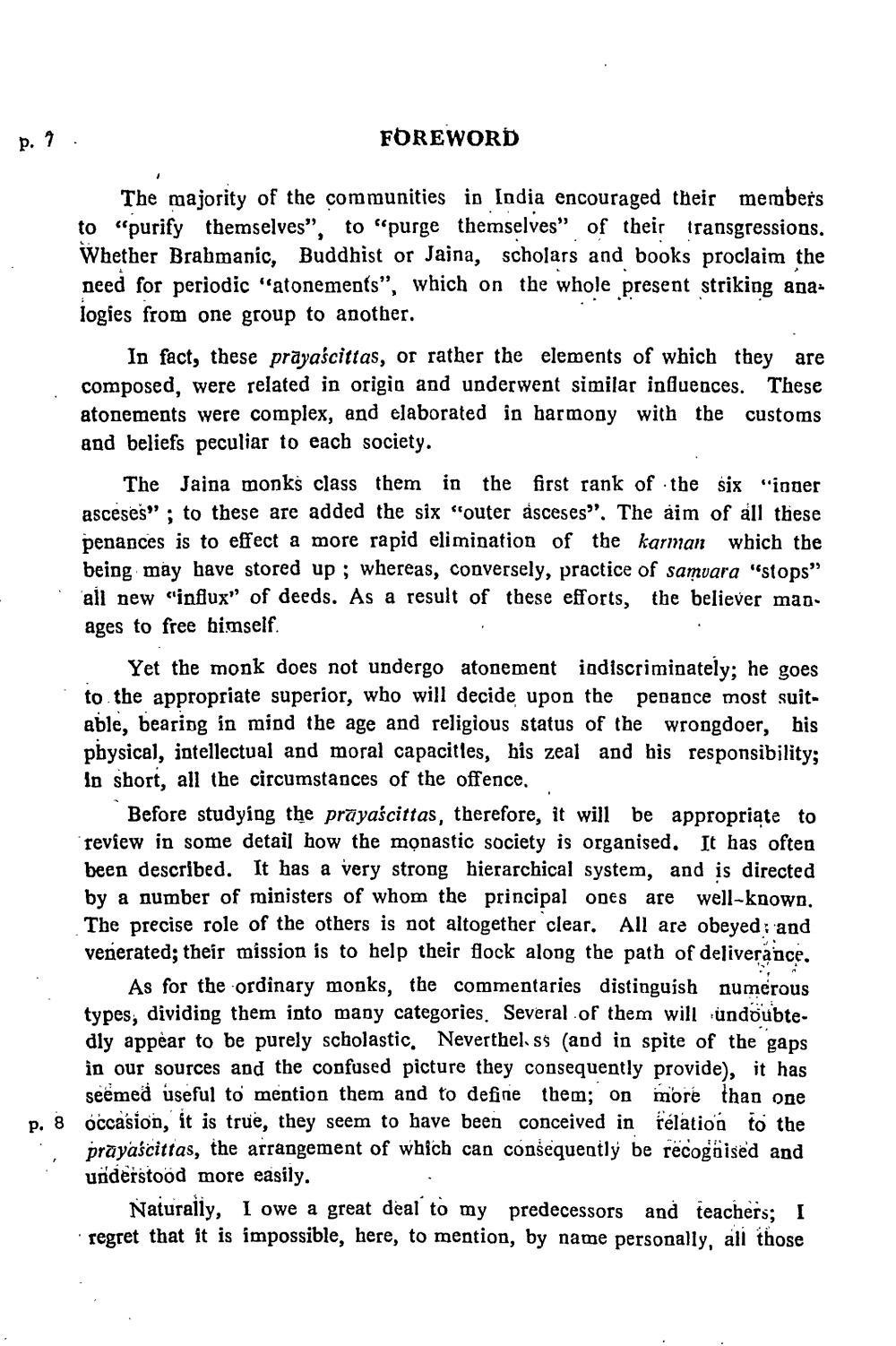________________
p. 1
FOREWORD
The majority of the communities in India encouraged their members to "purify themselves", to "purge themselves" of their transgressions. Whether Brahmanic, Buddhist or Jaina, scholars and books proclaim the need for periodic "atonements", which on the whole present striking ana+ logies from one group to another.
In fact, these prayaścittas, or rather the elements of which they are composed, were related in origin and underwent similar influences. These atonements were complex, and elaborated in harmony with the customs and beliefs peculiar to each society.
;
The Jaina monks class them in the first rank of the six "inner asceses" to these are added the six "outer asceses". The aim of all these penances is to effect a more rapid elimination of the karman which the being may have stored up; whereas, conversely, practice of samvara "stops" all new "influx" of deeds. As a result of these efforts, the believer manages to free himself.
Yet the monk does not undergo atonement indiscriminately; he goes to the appropriate superior, who will decide upon the penance most suitable, bearing in mind the age and religious status of the wrongdoer, his physical, intellectual and moral capacities, his zeal and his responsibility; in short, all the circumstances of the offence.
Before studying the prayaścittas, therefore, it will be appropriate to review in some detail how the monastic society is organised. It has often been described. It has a very strong hierarchical system, and is directed by a number of ministers of whom the principal ones are well-known. The precise role of the others is not altogether clear. All are obeyed; and venerated; their mission is to help their flock along the path of deliverance.
As for the ordinary monks, the commentaries distinguish numerous types, dividing them into many categories. Several of them will undoubte dly appear to be purely scholastic. Neverthel. ss (and in spite of the gaps in our sources and the confused picture they consequently provide), it has seemed useful to mention them and to define them; on more than one p. 8 occasion, it is true, they seem to have been conceived in relation to the prayaścittas, the arrangement of which can consequently be recognised and understood more easily.
Naturally, I owe a great deal to my predecessors and teachers; I regret that it is impossible, here, to mention, by name personally, all those




